Tourism is a global phenomenon, and Which Countries Rely Most On Tourism for their economic stability? SIXT.VN understands the allure of travel and its economic impact, offering seamless travel experiences in Vietnam. This article explores nations where tourism is a major economic pillar, highlighting opportunities for travelers seeking enriching cultural experiences and adventure. Discover popular tourist destinations and travel support.
1. What Factors Determine a Country’s Reliance on Tourism?
A country’s reliance on tourism is determined by several factors, including the size and diversity of its economy, its natural resources, and its geographical location. Small island nations often rely heavily on tourism due to their limited economic options, while countries with diverse economies are less dependent on tourism revenue.
- Economic Diversification: Countries with diverse economies tend to be less reliant on tourism.
- Natural Resources: Nations rich in natural resources might prioritize extraction and export over tourism.
- Geographical Location: Island nations often have fewer economic alternatives, making them highly dependent on tourism.
- Government Policies: Policies that promote and support tourism can significantly increase a country’s reliance on it.
2. Which Countries Top the List of Tourism-Dependent Economies?
Several countries heavily rely on tourism for their economic well-being. Here are some examples, with the Maldives leading the way:
2.1. Maldives
In 2022, revenue from foreign visitors equaled 68% of the GDP of the Maldives. With pristine beaches, luxurious resorts, and unparalleled marine life, it’s no surprise that tourism dominates the Maldives’ economy. About 1.7 million people traveled to the Maldives last year, spending $4.2 billion. The average spend per visitor was $2,500.
- Population: 515,000
- GDP: $6.2 billion
- Area: 300 km²
- Key Attractions: Luxurious resorts, diving spots, and pristine beaches.
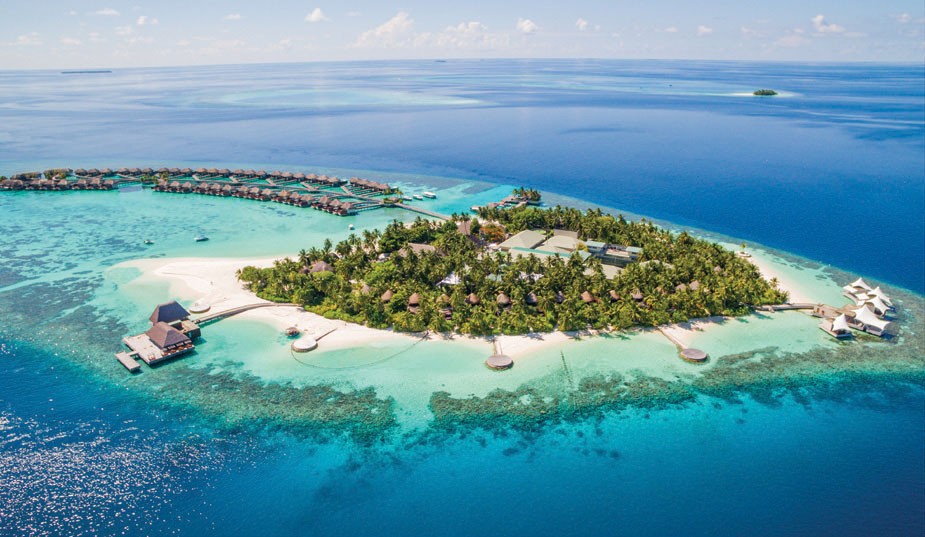 Maldives
Maldives
2.2. Antigua and Barbuda
In 2022, revenue from foreign visitors equaled 55% of Antigua and Barbuda’s GDP. Known for its beautiful beaches and yachting facilities, this Caribbean nation thrives on tourism. 265,000 people traveled to Antigua and Barbuda last year, spending $921 million. The average spend per visitor was $3,500.
- Population: 101,000
- GDP: $1.7 billion
- Area: 440 km²
- Key Attractions: Yachting, luxury resorts, and historical sites.
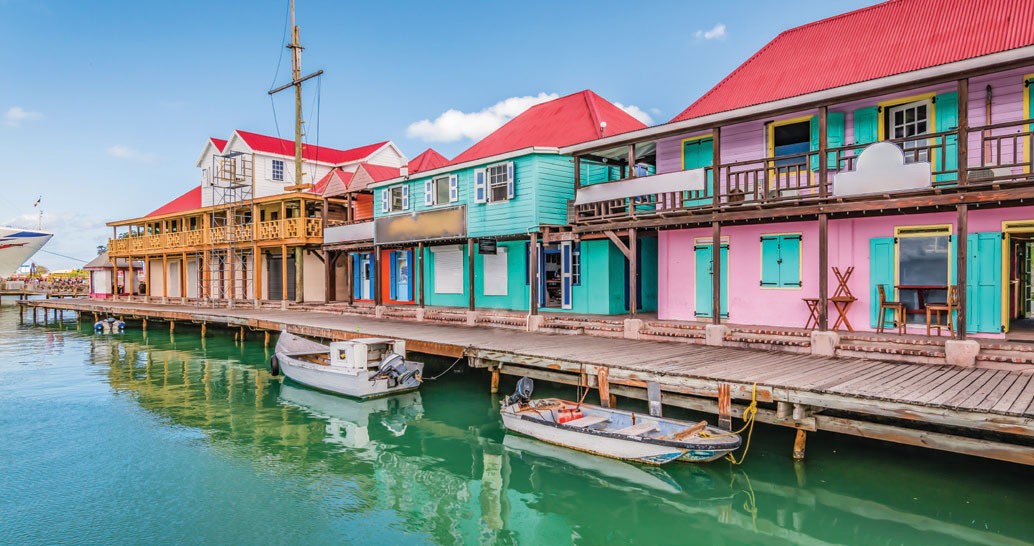 Antigua and Barbuda
Antigua and Barbuda
2.3. Seychelles
In 2022, revenue from foreign visitors equaled 23.1% of the GDP of the Seychelles. This archipelago in the Indian Ocean boasts stunning biodiversity, exclusive resorts, and a year-round tropical climate that lures tourists seeking a premium vacation. 332,000 people traveled to the Seychelles last year, spending $932 million. The average spend per visitor was $2,800.
- Population: 100,000
- GDP: $1.9 billion
- Area: 457 km²
- Key Attractions: Exclusive resorts, nature reserves, and beautiful beaches.
2.4. Jamaica
In 2022, revenue from foreign visitors equaled 23.1% of Jamaica’s GDP. Famous for its vibrant culture, reggae music, and stunning landscapes, Jamaica offers a mix of relaxation and adventure for tourists. 2.5 million people traveled to Jamaica last year, spending $3.7 billion. The average spend per visitor was $1,500.
- Population: 2.8 million
- GDP: $16 billion
- Area: 10,991 km²
- Key Attractions: Reggae music, beaches, and historical sites.
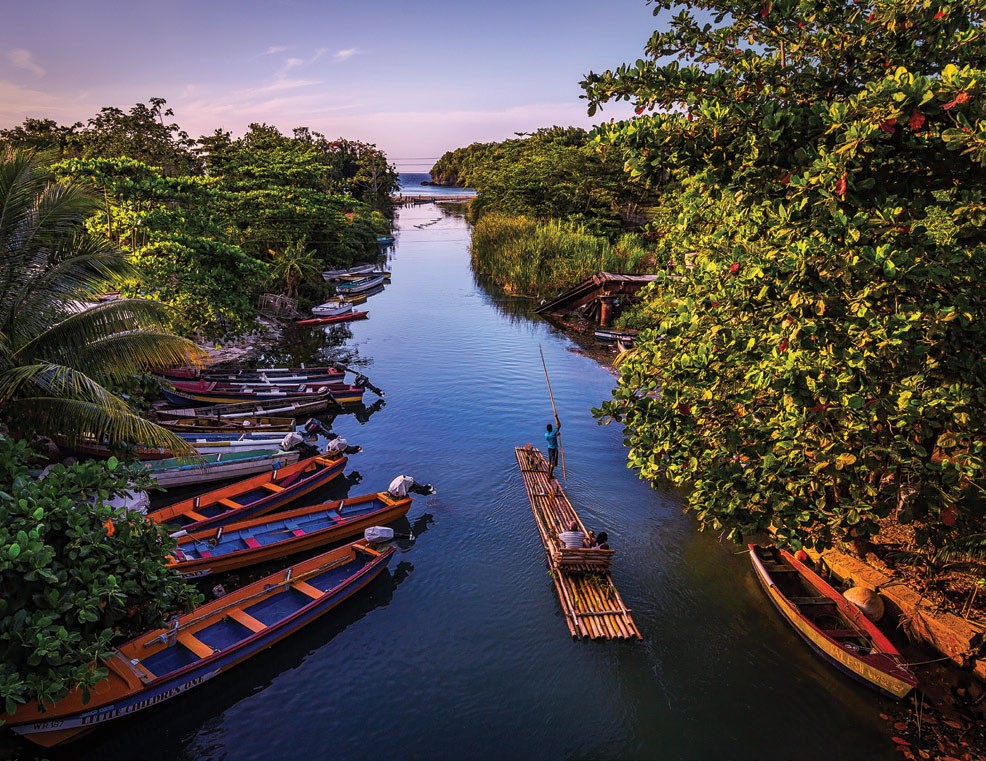 Jamaica
Jamaica
2.5. Belize
In 2022, revenue from foreign visitors equaled 20.3% of Belize’s GDP. With the Mesoamerican Barrier Reef, Mayan ruins, and lush rainforests, Belize attracts eco-tourists and adventure seekers. 371,000 people traveled to Belize last year, spending $600 million. The average spend per visitor was $1,620.
- Population: 441,000
- GDP: $3 billion
- Area: 22,966 km²
- Key Attractions: Mayan ruins, diving spots, and eco-tourism.
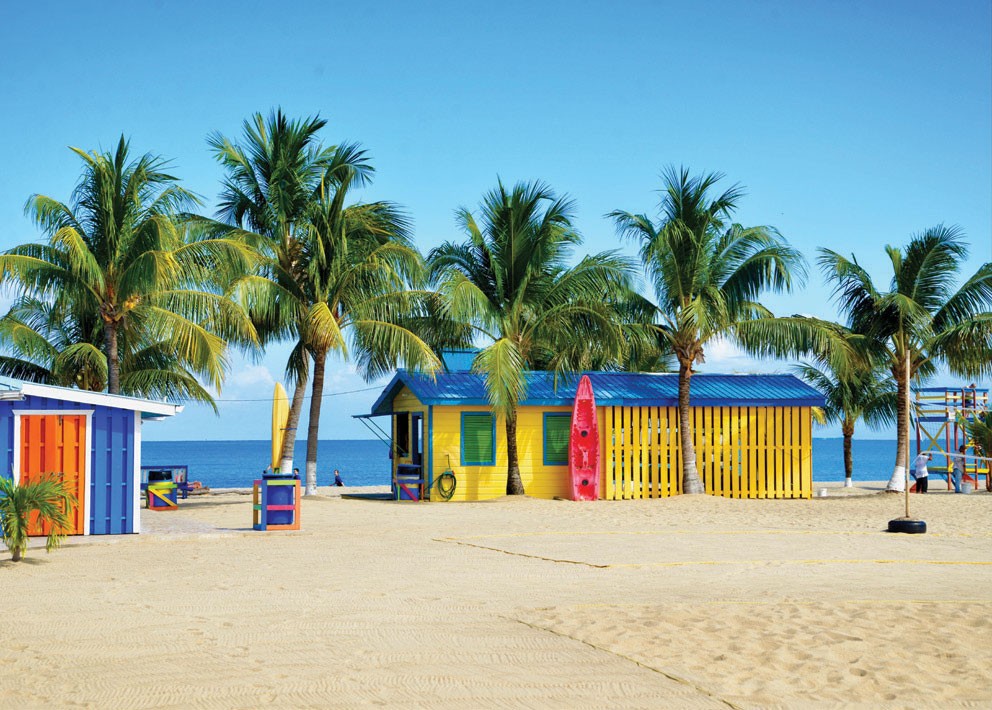 Belize
Belize
2.6. Croatia
In 2022, revenue from foreign visitors equaled 18.9% of Croatia’s GDP. Boasting a stunning coastline, historic cities, and vibrant cultural scene, Croatia is a top destination in Europe. 15.3 million people traveled to Croatia last year, spending $13.5 billion. The average spend per visitor was $900.
- Population: 3.9 million
- GDP: $71 billion
- Area: 56,594 km²
- Key Attractions: Coastal cities, historical sites, and cultural events.
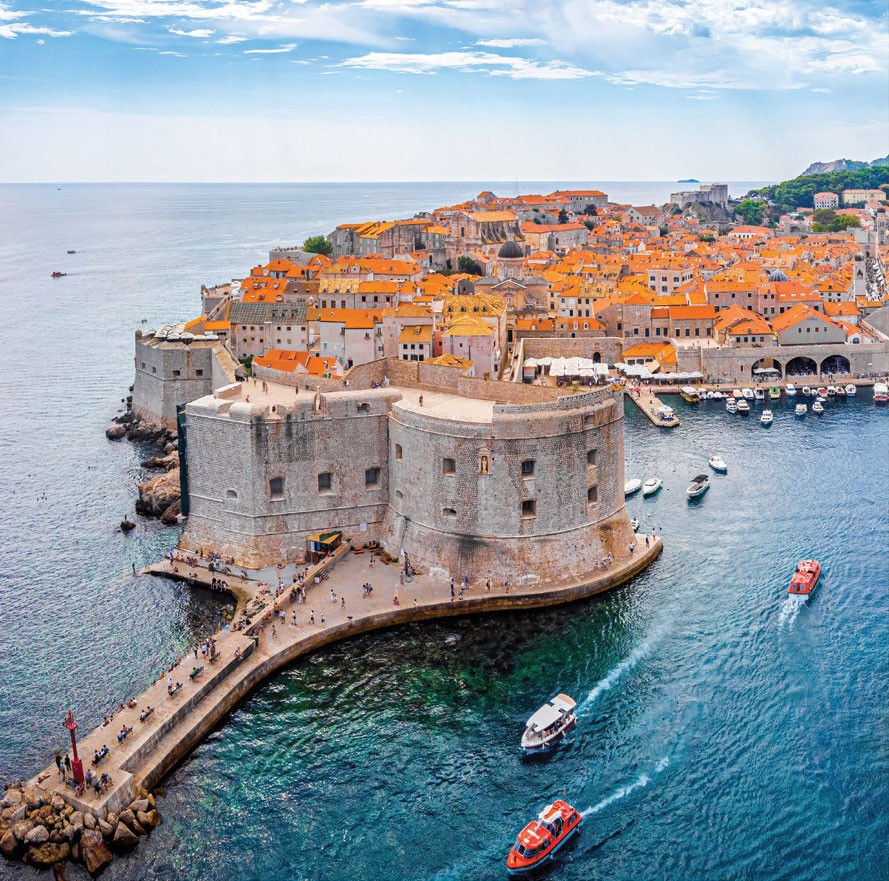 Croatia
Croatia
2.7. Montenegro
In 2022, revenue from foreign visitors equaled 18.2% of Montenegro’s GDP. Known for its dramatic mountains, medieval villages, and narrow strip of beaches, Montenegro has become a popular destination on the Adriatic coast. Two million people traveled to Montenegro last year, spending $1.1 billion. The average spend per visitor was $550.
- Population: 602,000
- GDP: $6.1 billion
- Area: 13,812 km²
- Key Attractions: Mountain scenery, coastal resorts, and historic sites.
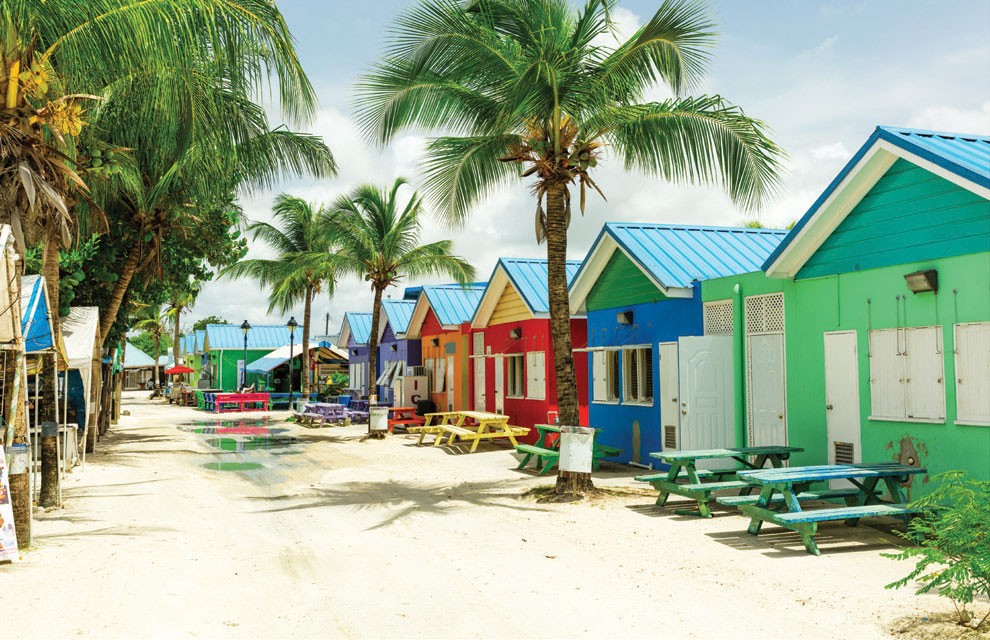 Montenegro
Montenegro
2.8. Barbados
In 2022, revenue from foreign visitors equaled 16.2% of Barbados’s GDP. As one of the Caribbean’s more developed islands, Barbados has beautiful beaches and a rich cultural heritage. 443,000 people traveled to Barbados last year, spending $929 million. The average spend per visitor was $2,100.
- Population: 268,000
- GDP: $5.7 billion
- Area: 439 km²
- Key Attractions: Beaches, rum distilleries, and historical sites.
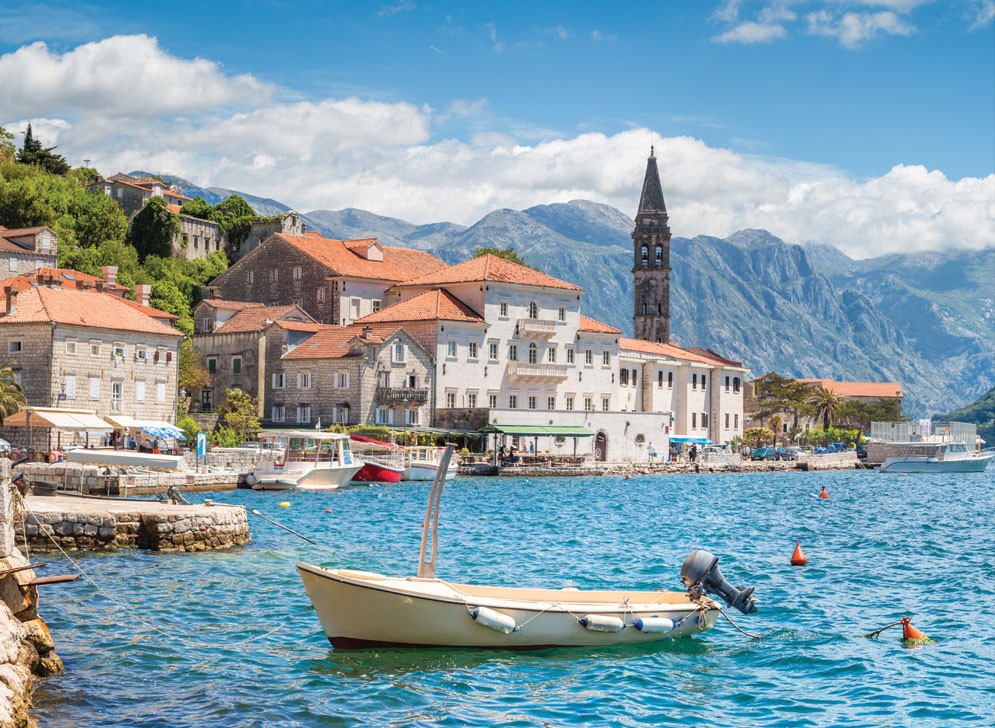 Barbados
Barbados
2.9. Albania
In 2022, revenue from foreign visitors equaled 16.2% of Albania’s GDP. With its rugged mountains, pristine beaches, and historical sites, Albania is increasingly becoming a tourism hotspot in the Balkans. 6.7 million people traveled to Albania last year, spending $3 billion. The average spend per visitor was $440.
- Population: 2.8 million
- GDP: $18.5 billion
- Area: 28,748 km²
- Key Attractions: Beaches, historical sites, and natural beauty.
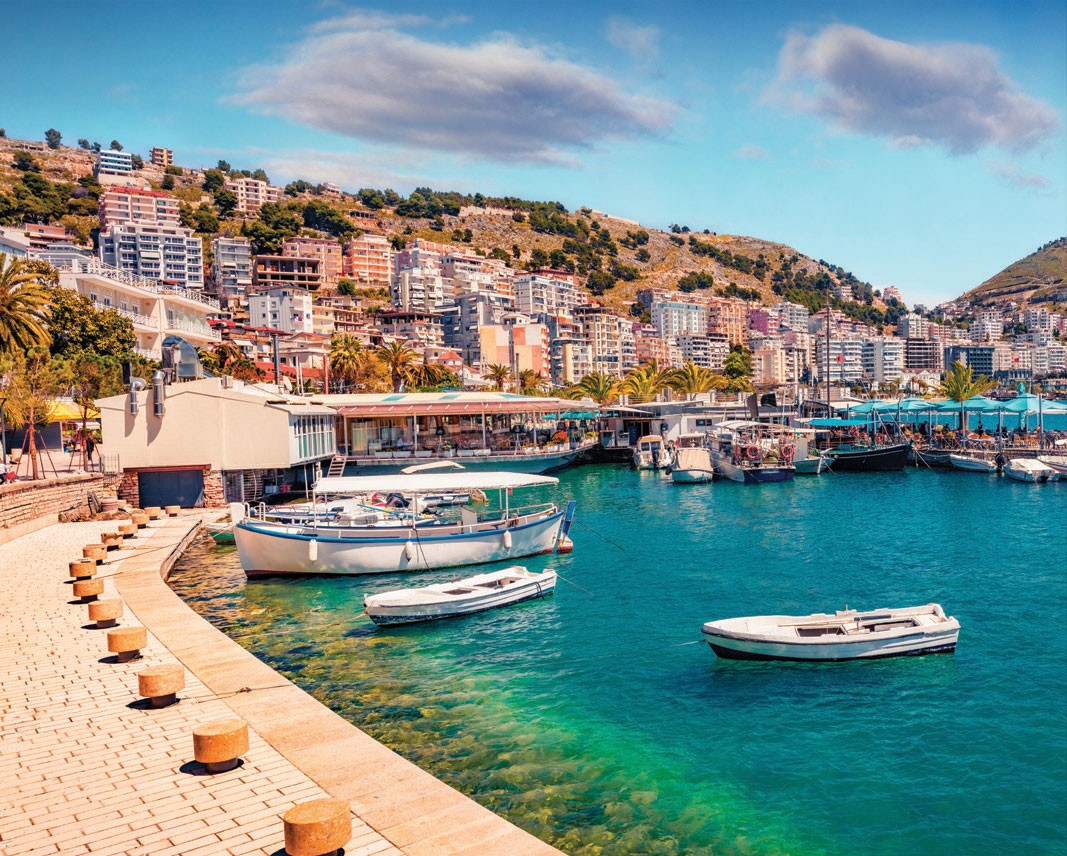 Albania
Albania
2.10. Fiji
In 2022, revenue from foreign visitors equaled 14.33% of Fiji’s GDP. Known as the “Soft Coral Capital,” Fiji offers stunning underwater landscapes, luxurious resorts, and a rich cultural heritage. 636,000 people traveled to Fiji last year, spending $700 million. The average spend per visitor was $1,100.
- Population: 926,000
- GDP: $4.8 billion
- Area: 18,274 km²
- Key Attractions: Underwater beauty, resorts, and cultural experiences.
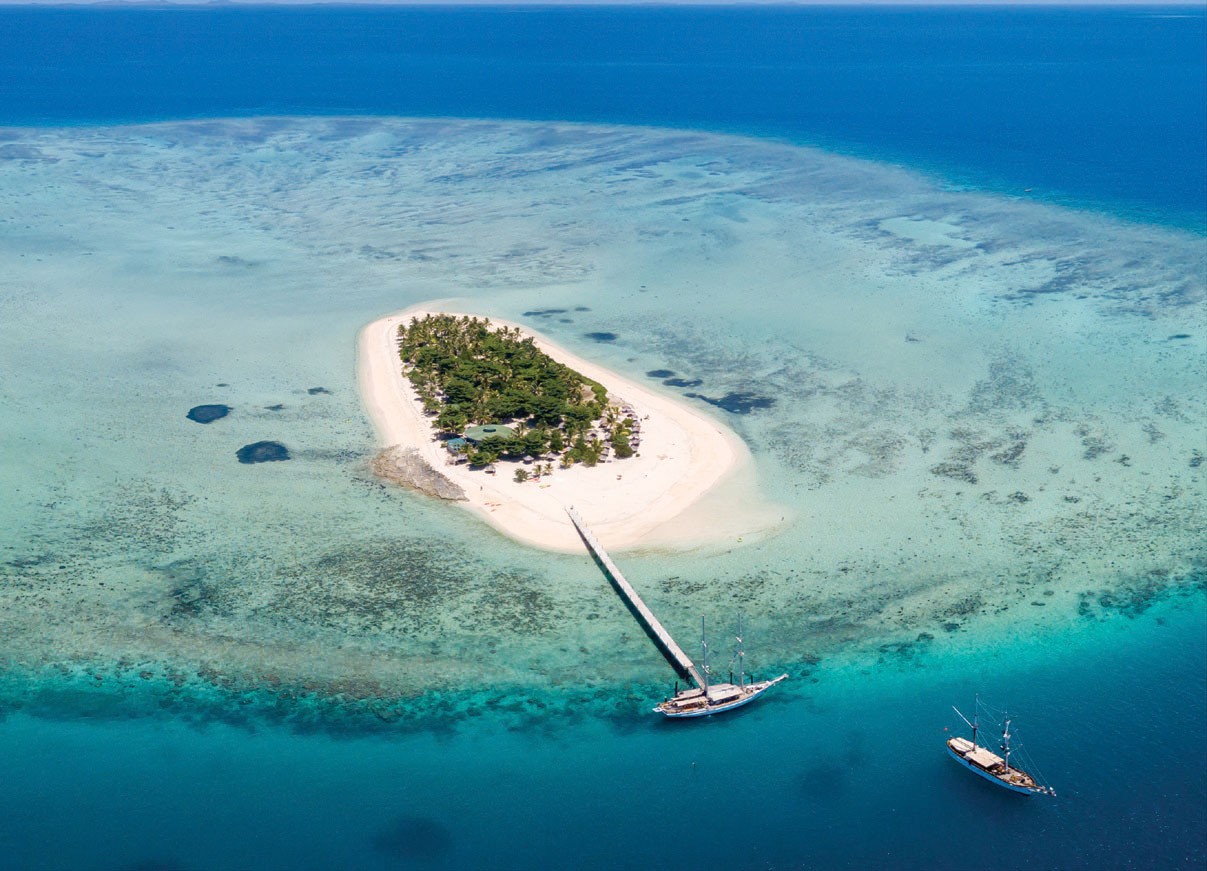 Fiji
Fiji
3. What Are the Benefits of Tourism for These Economies?
Tourism provides numerous economic benefits to countries that rely heavily on it. These include job creation, increased tax revenue, infrastructure development, and foreign exchange earnings.
- Job Creation: Tourism generates jobs in various sectors, including hospitality, transportation, and entertainment.
- Increased Tax Revenue: Tourism-related activities contribute to government tax revenue through sales taxes, income taxes, and tourism-specific taxes.
- Infrastructure Development: Tourism drives investment in infrastructure, such as airports, roads, and hotels, which benefits both tourists and locals.
- Foreign Exchange Earnings: Tourism brings in foreign currency, which can improve a country’s balance of payments and strengthen its economy.
4. What Are the Challenges of Relying Heavily on Tourism?
Depending too much on tourism can pose several challenges. Economic vulnerability, environmental impact, seasonality, and socio-cultural impacts are among the key concerns.
- Economic Vulnerability: Over-reliance on tourism makes economies vulnerable to external shocks such as economic downturns or global pandemics.
- Environmental Impact: High tourist activity can lead to environmental degradation, including pollution, habitat destruction, and strain on resources.
- Seasonality: Many tourist destinations experience seasonal fluctuations, leading to periods of high employment followed by periods of unemployment.
- Socio-Cultural Impacts: Tourism can sometimes negatively impact local cultures, leading to the commodification of traditions and displacement of communities.
5. How Can Countries Diversify Their Economies to Reduce Reliance on Tourism?
To reduce their reliance on tourism, countries can diversify their economies by investing in other sectors such as manufacturing, technology, and agriculture. Diversification helps create a more resilient and sustainable economic base.
- Investment in Manufacturing: Developing manufacturing industries can provide alternative sources of employment and revenue.
- Technology Sector Development: Encouraging innovation and investment in technology can lead to high-growth industries.
- Agricultural Development: Modernizing agricultural practices and promoting value-added agricultural products can increase exports and reduce import dependence.
- Education and Skills Training: Investing in education and skills training can help create a workforce capable of supporting diversified industries.
6. What Role Does Sustainable Tourism Play in These Economies?
Sustainable tourism aims to minimize the negative impacts of tourism on the environment and local communities while maximizing its economic benefits. Sustainable practices can help ensure the long-term viability of tourism-dependent economies.
- Environmental Conservation: Sustainable tourism promotes practices that protect natural resources and minimize pollution.
- Community Involvement: Engaging local communities in tourism planning and development ensures that they benefit from tourism activities.
- Cultural Preservation: Sustainable tourism supports the preservation of local cultures and traditions.
- Economic Viability: By ensuring the long-term health of tourism resources, sustainable practices help maintain the economic viability of tourism-dependent economies.
7. How Does Political Stability Affect Tourism in These Countries?
Political stability is crucial for attracting tourists. Unstable political conditions can deter visitors, leading to economic losses for countries that rely on tourism.
- Safety and Security: Tourists are more likely to visit countries with stable political environments and low crime rates.
- Investment Climate: Political stability encourages investment in tourism infrastructure, such as hotels, resorts, and transportation networks.
- Government Policies: Stable governments can implement consistent policies that support tourism development.
- International Relations: Positive international relations can improve a country’s image and attract more tourists.
8. What Impact Does Climate Change Have on Tourism-Dependent Nations?
Climate change poses a significant threat to tourism-dependent nations, particularly those with coastal or island destinations. Rising sea levels, extreme weather events, and changes in ecosystems can negatively impact tourism.
- Rising Sea Levels: Coastal erosion and flooding can damage beaches and infrastructure, reducing the attractiveness of coastal destinations.
- Extreme Weather Events: Hurricanes, cyclones, and other extreme weather events can disrupt tourism activities and damage tourism facilities.
- Ecosystem Changes: Changes in ecosystems, such as coral bleaching, can reduce the appeal of natural attractions.
- Adaptation Measures: Investing in adaptation measures, such as coastal protection and climate-resilient infrastructure, is essential for mitigating the impacts of climate change on tourism.
9. How Has the COVID-19 Pandemic Impacted These Tourism-Reliant Countries?
The COVID-19 pandemic had a devastating impact on tourism-reliant countries. Travel restrictions, lockdowns, and fear of infection led to a sharp decline in international tourism, resulting in significant economic losses.
- Decline in Tourist Arrivals: The pandemic caused a dramatic decrease in international tourist arrivals, leading to revenue losses for tourism businesses.
- Job Losses: Many workers in the tourism sector lost their jobs due to business closures and reduced demand.
- Economic Recession: Tourism-dependent economies experienced severe recessions as a result of the decline in tourism revenue.
- Recovery Strategies: Implementing recovery strategies, such as promoting domestic tourism, diversifying tourism products, and adopting health and safety protocols, is crucial for rebuilding the tourism sector.
10. What Are Some Emerging Trends in Tourism That Could Benefit These Countries?
Several emerging trends in tourism could benefit tourism-reliant countries. These include eco-tourism, adventure tourism, cultural tourism, and digital nomadism.
- Eco-Tourism: Promoting eco-friendly tourism practices can attract environmentally conscious travelers and protect natural resources.
- Adventure Tourism: Developing adventure tourism products, such as hiking, diving, and wildlife safaris, can appeal to thrill-seeking travelers.
- Cultural Tourism: Showcasing local cultures, traditions, and heritage can attract tourists interested in authentic experiences.
- Digital Nomadism: Creating infrastructure and services to attract digital nomads can generate revenue from long-term visitors who work remotely.
11. How Does SIXT.VN Support Tourism in Vietnam?
SIXT.VN plays a vital role in supporting tourism in Vietnam by providing convenient and reliable transportation services. We offer airport transfers, car rentals, and tour packages that cater to the needs of international tourists, ensuring a seamless and enjoyable travel experience.
- Airport Transfers: SIXT.VN offers convenient and reliable airport transfer services, ensuring that tourists can easily reach their accommodations upon arrival in Vietnam.
- Car Rentals: We provide a wide range of vehicles for rent, allowing tourists to explore Vietnam at their own pace.
- Tour Packages: SIXT.VN offers curated tour packages that showcase the best of Vietnam, from cultural sites to natural attractions.
With SIXT.VN, exploring Vietnam becomes effortless. Our services are designed to make your journey as comfortable and convenient as possible. Whether you need a ride from the airport, a car to explore the countryside, or a guided tour of the city, we’ve got you covered. Our goal is to ensure you have an unforgettable experience in Vietnam. Contact us today to book your transportation needs and start your adventure with SIXT.VN. Address: 260 Cau Giay, Hanoi, Vietnam. Hotline/Whatsapp: +84 986 244 358. Website: SIXT.VN.
12. What Makes Hanoi a Unique Tourist Destination?
Hanoi, the capital of Vietnam, is a unique tourist destination with a rich history, vibrant culture, and delicious cuisine. The city’s blend of ancient temples, colonial architecture, and modern developments offers a diverse range of attractions for visitors.
- Historical Significance: Hanoi has a long and storied history, serving as the capital of Vietnam for over a thousand years. The city is home to numerous historical sites, such as the Ho Chi Minh Mausoleum, the Temple of Literature, and the Old Quarter.
- Cultural Attractions: Hanoi boasts a vibrant cultural scene, with traditional water puppet shows, bustling markets, and ancient temples. The city’s art galleries and museums showcase Vietnamese art and history.
- Cuisine: Hanoi is renowned for its delicious cuisine, with iconic dishes such as pho, bun cha, and egg coffee. The city’s street food scene is a must-try for any visitor.
- Accessibility: Hanoi is easily accessible by air, with direct flights from many international destinations. The city also has a well-developed transportation network, making it easy to explore.
13. How Can Tourists Ensure a Safe and Enjoyable Trip to Hanoi?
To ensure a safe and enjoyable trip to Hanoi, tourists should take certain precautions and be aware of local customs and regulations.
- Travel Insurance: Purchase travel insurance that covers medical expenses, trip cancellations, and lost or stolen belongings.
- Vaccinations: Consult with your doctor about necessary vaccinations and health precautions before traveling to Vietnam.
- Food and Water Safety: Drink bottled water and eat at reputable restaurants to avoid foodborne illnesses.
- Petty Theft: Be aware of your surroundings and take precautions against petty theft, such as pickpocketing and scams.
- Local Customs: Respect local customs and traditions, such as dressing modestly when visiting religious sites.
- Transportation: Use reputable transportation services, such as taxis or ride-hailing apps, and negotiate fares in advance.
- Emergency Contacts: Keep a list of emergency contacts, including the local embassy or consulate, and know how to reach local law enforcement.
14. What Are the Most Popular Tourist Activities in Hanoi?
Hanoi offers a wide range of tourist activities, from exploring historical sites to enjoying the city’s vibrant cultural scene. Some of the most popular activities include:
- Visiting the Old Quarter: Wander through the narrow streets of the Old Quarter, browsing the shops and sampling street food.
- Exploring Hoan Kiem Lake: Take a stroll around Hoan Kiem Lake and visit Ngoc Son Temple, located on a small island in the lake.
- Visiting the Ho Chi Minh Mausoleum: Pay respects to Ho Chi Minh, the former leader of Vietnam, at his mausoleum.
- Attending a Water Puppet Show: Watch a traditional water puppet show, a unique art form that originated in Vietnam.
- Visiting the Temple of Literature: Explore the Temple of Literature, Vietnam’s first university, and learn about the country’s educational history.
- Taking a Cooking Class: Learn how to prepare Vietnamese dishes in a cooking class.
15. What Types of Accommodations Are Available for Tourists in Hanoi?
Hanoi offers a wide range of accommodations to suit every budget and preference. Options include luxury hotels, boutique hotels, guesthouses, and hostels.
- Luxury Hotels: Hanoi has several luxury hotels offering world-class amenities, such as spas, swimming pools, and fine dining restaurants.
- Boutique Hotels: Boutique hotels offer a more intimate and stylish experience, often located in historic buildings or trendy neighborhoods.
- Guesthouses: Guesthouses are a budget-friendly option, offering simple and comfortable accommodations.
- Hostels: Hostels are a popular choice for backpackers, offering dormitory-style rooms and communal facilities.
- Apartments: Renting apartments is a great idea for long-term visitors.
16. What Are the Best Times of the Year to Visit Hanoi?
The best times to visit Hanoi are during the spring (March to April) and autumn (September to November), when the weather is mild and pleasant.
- Spring (March to April): The weather is warm and sunny, with low humidity. This is a great time to explore the city’s parks and gardens.
- Autumn (September to November): The weather is cool and dry, making it ideal for sightseeing.
- Summer (May to August): The weather is hot and humid, with occasional rain.
- Winter (December to February): The weather is cool and dry, but it can be chilly at times.
17. How Can Tourists Contribute to the Local Economy in Hanoi?
Tourists can contribute to the local economy in Hanoi by supporting local businesses, buying souvenirs, and tipping service staff.
- Support Local Businesses: Shop at local markets, eat at local restaurants, and stay at locally owned accommodations.
- Buy Souvenirs: Purchase souvenirs from local artisans and vendors to support their livelihoods.
- Tip Service Staff: Tip service staff, such as waiters, drivers, and tour guides, to show your appreciation for their service.
- Participate in Local Activities: Attend local festivals, take cooking classes, and visit community-based tourism projects.
18. What Are Some Lesser-Known Attractions in Hanoi?
While Hanoi is famous for its well-known landmarks, there are also many lesser-known attractions that are worth exploring.
- The Train Street: A narrow residential street where trains pass just inches from people’s homes.
- The Ceramic Mosaic Mural: A 4-kilometer-long mosaic made from ceramic tiles, depicting scenes from Vietnamese history and culture.
- The Perfume Pagoda: A complex of temples and shrines located in the Huong Tich mountains, accessible by boat and cable car.
- The Bat Trang Pottery Village: A traditional pottery village where you can watch artisans create ceramic products and purchase souvenirs.
- The Long Bien Bridge: A historic bridge built during the French colonial era, offering panoramic views of the Red River.
19. How Does SIXT.VN Ensure a Hassle-Free Travel Experience in Hanoi?
SIXT.VN ensures a hassle-free travel experience in Hanoi by providing reliable transportation, professional service, and 24/7 customer support. We take care of all the details, so you can relax and enjoy your trip.
- Reliable Transportation: SIXT.VN offers a fleet of well-maintained vehicles and professional drivers to ensure safe and comfortable transportation.
- Professional Service: Our team is dedicated to providing excellent customer service, from booking your transportation to answering your questions.
- 24/7 Customer Support: SIXT.VN offers 24/7 customer support to assist you with any issues or concerns during your trip.
- Easy Booking: Our online booking platform makes it easy to reserve your transportation in advance.
SIXT.VN is committed to making your travel experience in Hanoi as smooth and enjoyable as possible. We understand that planning a trip can be stressful, which is why we offer comprehensive transportation services designed to meet all your needs. From the moment you arrive at the airport to the day you depart, we’re here to help you every step of the way. With SIXT.VN, you can focus on creating unforgettable memories in Hanoi, knowing that your transportation is in good hands.
20. What Cultural Etiquette Should Tourists Be Aware of in Vietnam?
Understanding and respecting local customs and etiquette is crucial for a positive travel experience in Vietnam.
- Greetings: Greet people with a slight bow and a smile. Avoid direct eye contact, which can be seen as confrontational.
- Dress Code: Dress modestly, especially when visiting religious sites. Cover your shoulders and knees.
- Shoes: Remove your shoes before entering someone’s home or a temple.
- Table Manners: Wait for the host to start eating before you do. Use chopsticks to eat and avoid sticking them upright in your rice bowl, as this resembles funeral rites.
- Public Behavior: Avoid loud or aggressive behavior in public.
- Photography: Ask for permission before taking photos of people.
- Tipping: Tipping is not mandatory but is appreciated for good service.
By being mindful of these cultural etiquette guidelines, you can show respect for Vietnamese culture and ensure a more meaningful and enjoyable travel experience.
21. Are There Any Specific Health Precautions Tourists Should Take in Vietnam?
Before traveling to Vietnam, tourists should take certain health precautions to protect themselves from potential illnesses.
- Vaccinations: Consult with your doctor about recommended vaccinations, such as hepatitis A, typhoid, and tetanus.
- Malaria: If you plan to visit rural areas, talk to your doctor about malaria prevention.
- Food and Water Safety: Drink bottled water and avoid eating raw or undercooked food.
- Insect Bites: Use insect repellent to protect yourself from mosquito bites, which can transmit diseases like dengue fever and Zika virus.
- Sun Protection: Wear sunscreen, a hat, and sunglasses to protect yourself from the sun.
- Travel Insurance: Purchase travel insurance that covers medical expenses and evacuation in case of illness or injury.
By taking these health precautions, you can minimize your risk of getting sick and enjoy a healthy and safe trip to Vietnam.
22. What Role Do Local Markets Play in Hanoi’s Tourism Appeal?
Local markets are an integral part of Hanoi’s tourism appeal, offering visitors a glimpse into the city’s culture, cuisine, and daily life.
- Cultural Immersion: Local markets provide a unique opportunity to immerse yourself in Vietnamese culture and interact with local people.
- Food Exploration: Sample a variety of Vietnamese dishes and snacks at local markets, such as pho, banh mi, and fresh fruit.
- Shopping: Shop for souvenirs, handicrafts, and local products at affordable prices.
- Atmosphere: Experience the lively and bustling atmosphere of a traditional Vietnamese market.
- Photography: Capture colorful photos of the market scenes and the people who work there.
Exploring Hanoi’s local markets is a must-do for any visitor who wants to experience the authentic side of the city.
23. How Does the Vietnamese Government Support Tourism?
The Vietnamese government recognizes the importance of tourism and has implemented various policies and initiatives to support its growth and development.
- Tourism Promotion: The government promotes Vietnam as a tourist destination through marketing campaigns, trade shows, and international partnerships.
- Infrastructure Development: The government invests in tourism infrastructure, such as airports, roads, and hotels, to improve the visitor experience.
- Visa Policies: The government has relaxed visa policies to make it easier for tourists to visit Vietnam.
- Sustainable Tourism: The government promotes sustainable tourism practices to protect the environment and cultural heritage.
- Tourism Training: The government provides training programs for tourism professionals to improve the quality of service.
These efforts demonstrate the government’s commitment to making Vietnam a top tourist destination.
24. What Are the Key Challenges Facing the Tourism Industry in Vietnam?
Despite its growth potential, the tourism industry in Vietnam faces several challenges that need to be addressed.
- Infrastructure: The infrastructure in some tourist destinations needs improvement, such as roads, airports, and accommodations.
- Environmental Sustainability: Protecting the environment and managing tourism sustainably is a challenge, especially in popular destinations.
- Service Quality: Improving the quality of service in the tourism sector is essential to meet the expectations of international tourists.
- Competition: Vietnam faces competition from other Southeast Asian countries, such as Thailand, Malaysia, and Singapore.
- Seasonality: Managing the seasonality of tourism and attracting visitors year-round is a challenge.
Addressing these challenges will help Vietnam realize its full potential as a leading tourist destination.
25. How Can Tourists Respect Local Customs and Traditions in Hanoi?
Respecting local customs and traditions is essential for a positive and enriching travel experience in Hanoi.
- Dress Modestly: Dress modestly, especially when visiting religious sites. Cover your shoulders and knees.
- Remove Shoes: Remove your shoes before entering someone’s home or a temple.
- Use Both Hands: When giving or receiving something, use both hands as a sign of respect.
- Avoid Touching Heads: Avoid touching someone’s head, as it is considered the most sacred part of the body.
- Keep Your Voice Down: Avoid speaking loudly in public places.
- Ask for Permission: Ask for permission before taking photos of people or entering private property.
- Respect Elders: Show respect to elders by greeting them first and offering them a seat.
By following these simple guidelines, you can demonstrate your respect for Vietnamese culture and traditions.
26. How Does SIXT.VN Contribute to Sustainable Tourism in Vietnam?
SIXT.VN is committed to promoting sustainable tourism practices in Vietnam by minimizing our environmental impact and supporting local communities.
- Eco-Friendly Vehicles: We offer a range of eco-friendly vehicles, such as hybrid and electric cars, to reduce emissions.
- Responsible Driving: We encourage our drivers to practice responsible driving habits, such as avoiding idling and maintaining their vehicles properly.
- Community Support: We support local communities by partnering with local businesses and organizations.
- Environmental Awareness: We promote environmental awareness among our employees and customers.
- Carbon Offset Programs: We offer carbon offset programs to allow our customers to offset the carbon emissions from their travel.
By implementing these sustainable practices, SIXT.VN is helping to protect Vietnam’s natural beauty and cultural heritage for future generations.
Ready to explore the beauty and culture of Vietnam? Let SIXT.VN be your trusted travel partner. We offer a wide range of services to make your trip seamless and enjoyable. From airport transfers to car rentals and curated tour packages, we have everything you need to discover the best of Vietnam. Our commitment to reliability, professionalism, and sustainability ensures that your travel experience will be both memorable and responsible. Don’t wait, start planning your adventure with SIXT.VN today! Contact us at Address: 260 Cau Giay, Hanoi, Vietnam. Hotline/Whatsapp: +84 986 244 358. Or visit our Website: SIXT.VN.
FAQ Section
Q1: Which countries rely most on tourism for their economy?
The Maldives tops the list, with tourism contributing approximately 68% of its GDP. Other countries heavily reliant on tourism include Antigua and Barbuda, Seychelles, Jamaica, and Belize.
Q2: What are the main benefits of tourism for a country’s economy?
Tourism generates employment, increases tax revenue, drives infrastructure development, and brings in foreign exchange earnings, which are essential for economic growth.
Q3: What are the potential downsides of relying too heavily on tourism?
Over-reliance on tourism can make a country’s economy vulnerable to external shocks like global recessions or pandemics, environmental degradation, seasonal fluctuations, and socio-cultural impacts.
Q4: How can countries reduce their dependence on tourism?
Countries can diversify their economies by investing in sectors such as manufacturing, technology, and agriculture, alongside focusing on education and skills training to create a resilient economic base.
Q5: What is sustainable tourism, and why is it important?
Sustainable tourism aims to minimize the negative impacts on the environment and local communities while maximizing economic benefits, ensuring the long-term viability of tourism-dependent economies.
Q6: How does political stability influence tourism?
Political stability is crucial for attracting tourists, as it ensures safety, security, and a positive investment climate for tourism infrastructure.
Q7: How does climate change affect tourism-dependent nations?
Climate change can lead to rising sea levels, extreme weather events, and changes in ecosystems, negatively impacting coastal and island destinations and reducing their appeal to tourists.
Q8: What was the impact of the COVID-19 pandemic on tourism-reliant countries?
The COVID-19 pandemic caused a sharp decline in international tourism, leading to significant economic losses, job losses, and severe recessions in tourism-dependent countries.
Q9: What emerging tourism trends could benefit these countries?
Emerging trends such as eco-tourism, adventure tourism, cultural tourism, and digital nomadism offer opportunities for tourism-reliant countries to attract different types of travelers and diversify their tourism offerings.
Q10: How can tourists contribute to sustainable tourism in countries like Vietnam?
Tourists can support local businesses, buy souvenirs from local artisans, respect local customs and traditions, and participate in community-based tourism projects to contribute to sustainable tourism.



